(Since I’m traveling throughout March and won’t have much time to write, I’ve recycled some of the posts from 2023 and pre-Substack. They’ll be new to many of you faithful, kind readers.)
I walk past the Alonso Cano Metro stop, which is ten minutes from our apartment, several times a week. I had no idea who the heck this guy was. There are so many metro stops named after men (never women): Quevedo, Ruben Dario, General Martinez, Guzman el Bueno, Tirso de Molina. Like the hundreds of kings, queens, dukes, and duchesses and military heroes from one of Spain’s many wars and conquests I’ll never remember their importance. Why should I?
It took a trip to Granada in southern Spain where Cano’s name popped up all over the city to make me pay attention. This Metro station guy must have really been someone. Cano came up constantly while I visited the city’s enormous, historic cathedral and its adjacent plaza. He was one of a series of the cathedral’s master architects and artists since the beginning of its construction in 1518 on top of the Great Mosque of Alhambra. In 1667, Cano re-designed the façade to turn it into a Baroque style and developed the plans for the structure of the cathedral’s five naves and four abutments of the arches. He had already completed seven oil paintings covering the dome about the life of the Virgin Mary. One of them remains a highlight of important works in the history of painting. He created two imposing chandeliers and a lectern decorated with the Immaculate Conception and the Virgin of Bethlehem. That was a lot of work for one year, the same year he died. After his death, other architects took over. In total, various designers, craftsmen, and laborers built the cathedral over a period of 181 years.
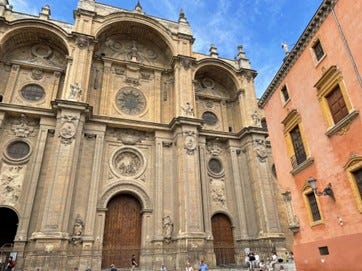
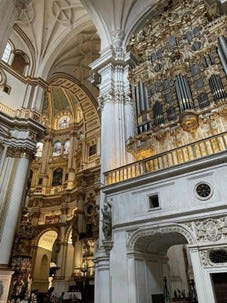
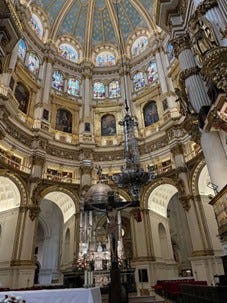

Born in Granada in 1601, Cano became a painter, sculptor, architect, designer, and draughtsman. He was one of the most famous Spanish artists ever and has been referred to as the Michaelangelo of Spain for the diversity of his work. Even as a boy the human figure fascinated him. He became a draftsman skilled in producing drawings in a range of styles. He achieved the title of “master painter” in 1626. He moved to Madrid in 1638.


I often head down a street in our neighborhood named after him on the way to one of the local markets―once a bunch of shops jumbled together and now a covered space for specialty foods―to buy cheese I can’t get in a grocery store. I’d been thinking more about the kinds of cheeses I’d buy rather than the name on the street sign. This oversight demonstrates where my interests lie.
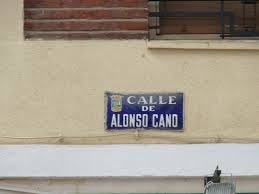

Not only was he one of Spain’s most esteemed painters, but he must also have had one of the country’s worst bad tempers. He committed a capital offense when he threw to the ground a statue of Saint Anthony of Padua which he had made for a client. Religious authorities considered destroying the image of saint a sin. The client had commented on the hefty price tag. “It has taken fifty years of study to produce this!” Cano yelled. Another time, he arrived at his home in Madrid only to find the place robbed, his wife murdered, and his Italian servant on the run. Infamous for his angry outbursts, the magistrates accused Cano of the murder. He left the city in a hurry to Valencia. When he came back to Madrid, he was tried, tortured, and then found innocent. As he lay on his death bed, he ordered the priest to remove the cross in front of him because it was not well carved. The Catholic Encyclopedia states that as he was taking his last breaths, he did not accept the Sacrament from the priest because the priest also gave last rites to conversos, Jews who had converted to Catholicism.
How would Alonso Cano feel about having a Metro stop named after him? It hardly lives up to the aesthetics, colossal size, and grandeur of his work, but maybe people will wonder who he was as they walk down the stairs and duck into the station or, like, me make a special trip to the Prado Museum in Madrid to finally catch on.

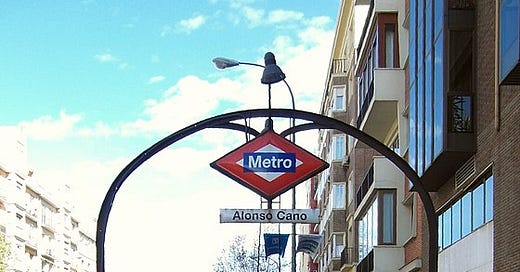




Love this greatest hit!
It's fascinating how different countries honor different kinds of people through public buildings and public works. Spain honors artists and architectects. The US honors politicians and business titans. And Mexico honors revolutionaries. That says a whole lot about the cultures of these three countries!